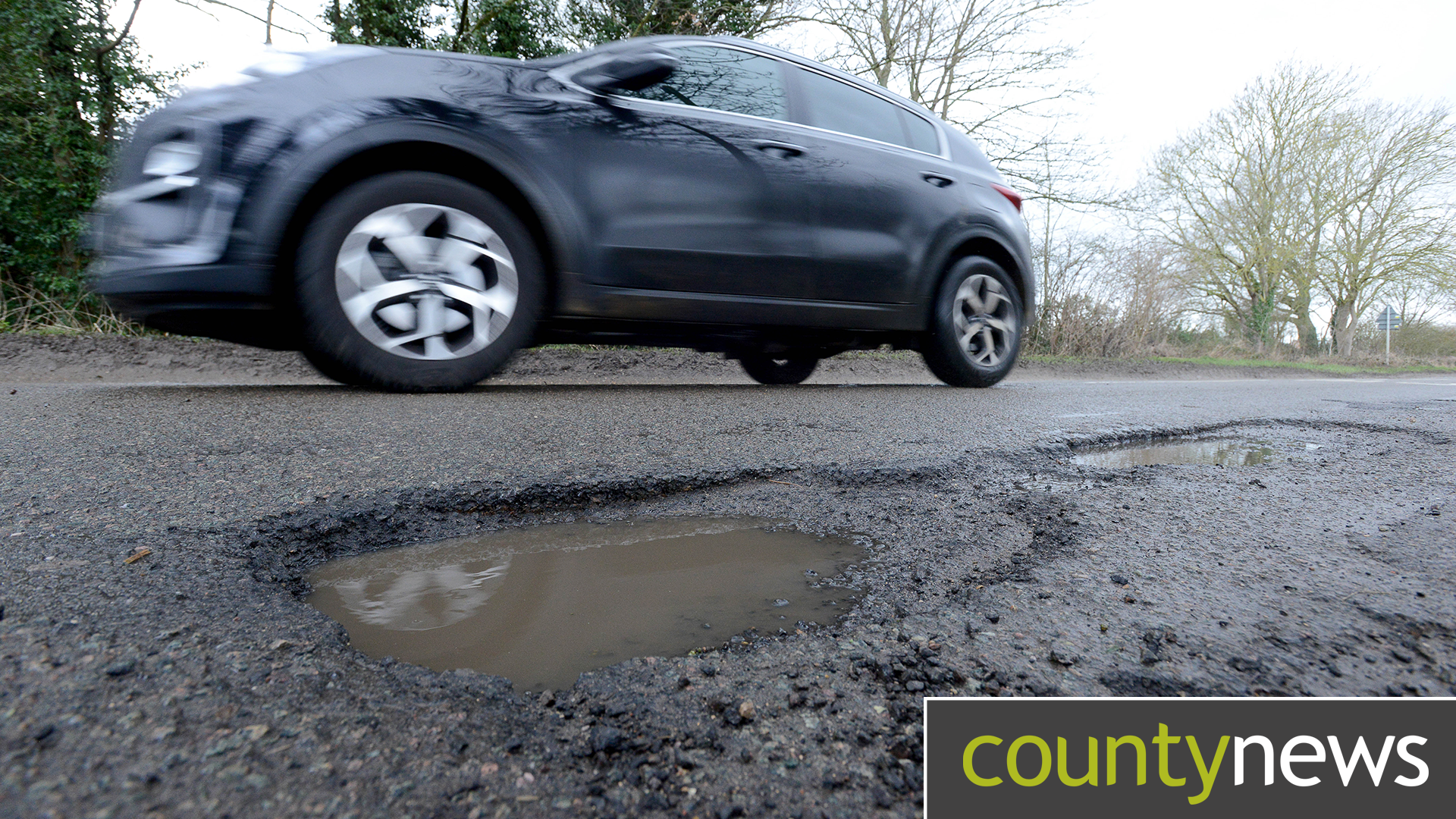
Lincolnshire campaign continues for more money to fix roads.
Throughout the winter months, potholes present a nuisance to road-users and a constant battle for our highways teams to stay on top of. Being such a large and rural county, there’s 5500 miles of roads to maintain with defects often appearing overnight.
Funding fix
Each year, funding for the maintenance of our roads comes from central government. Of course residents have contributed to that through road tax.
But last year that crucial cash was cut by 25% - £12 million. County councillors then voted to fill this gap with money from our reserves but we know this is not something we can do every year.
So ahead of this year’s budget the council has been lobbying Government for a return of that £12m. The ‘Fix Our Funds To Fix Our Roads’ campaign included a letter to Grant Shapps, the Secretary of State for Transport.
In the letter Cllr Martin Hill, leader of the council, warned that: “We have 660 miles of roads that are almost unusable and could very quickly become unsafe because we cannot afford to sufficiently maintain them.
“Unless the funding shortfall is rectified, the situation could soon spiral out of control and require even more spending in future. At some point, something has got to give.”
Residents’ support
Cllr Richard Davies, executive member for highways, asked residents to join in and share their views too, saying: “It is essential that we hear from residents about this. Every account of what our crumbling roads means to them really matters in us telling Government how serious this issue is to all of us.”
Answering the call, residents joined in with their own stories of life on Lincolnshire roads, posting their accounts of what they face on a daily basis via the council’s website.
And we made sure those comments were put forward to the government to support our case.
Despite our, and your, efforts though, to date the funding has not been re-instated.
What’s next?
Because of the failure of Government to bridge the funding gap, the council has voted to make up the missing funds once again. But in difficult financial times, this isn’t easy.
Cllr Hill said: “It’s incredibly disappointing that the Department for Transport and the Transport Secretary never responded to our plea to fill our £12m funding gap. But we are determined not to leave our roads in a poor state of repair and unsafe for residents. I’m proud to say that our council has voted to allocate money for highways from a combination of council reserves and a small rise in council tax.”
Making the cut
With spring well underway, residents across the county will be regularly mowing their lawns.
But for the council, grass-cutting is a big job and a vital part of keeping the county’s verges, roads and footpaths safe and enhancing our countryside.
Our grass-cutting programme aims to:
- clear a one metre strip on either side of a highway
- clear the way and help visibility at junctions and some bends
- help botanical diversity by encouraging wild plants and flowers
You might see the grass getting tall and wonder why we haven’t cut it. It could be privately-owned land, or a park or open space belonging to a district or parish council. They will have their own grass cutting programme for these areas.
Our annual cutting programme falls into three blocks, usually between the beginning of April to early October, although those dates can move a bit depending on the weather and how fast the grass is actually growing.
As a general rule, these take place from:
- 25 April – 29 May
- 13 June – 17 July
- 5 September – 9 October
We try and get round all the areas that need cutting in these time frames, however if we suddenly have a lot of rain, we might be delayed. If the grass on a verge is getting really tall and you feel it is a safety concern, you can let us know by reporting it at fixmystreet.lincolnshire.gov.uk.
